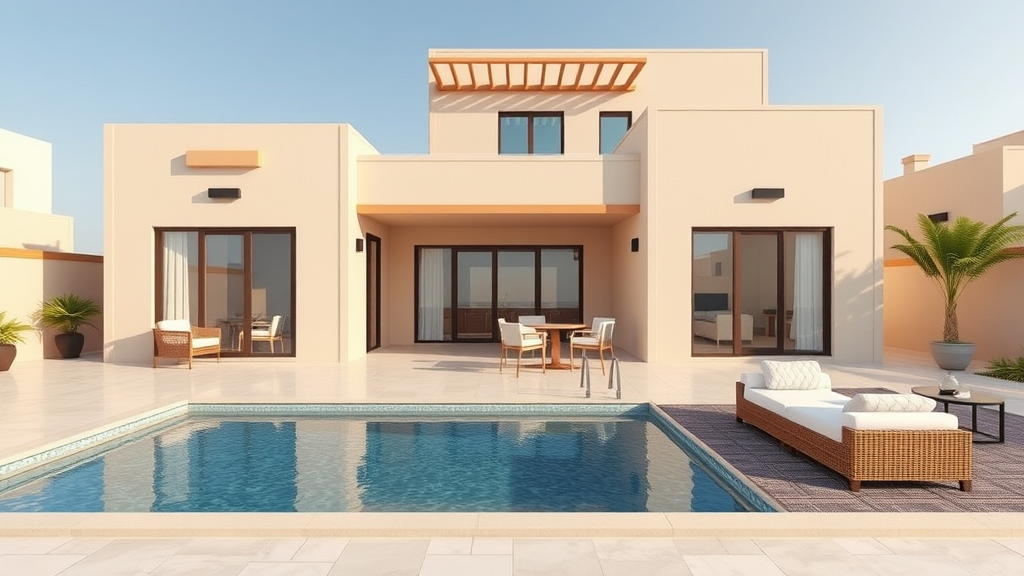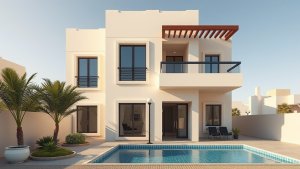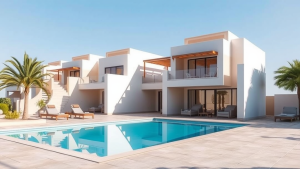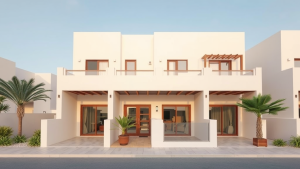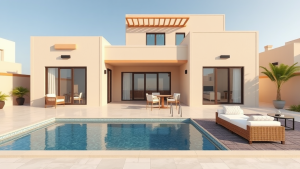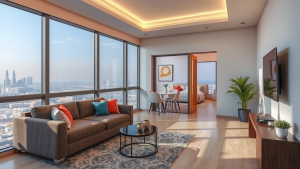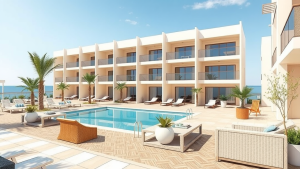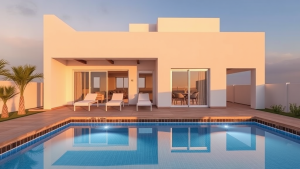The role of vision 2030 projects in stabilizing living costs in Hurghada
Vision 2030 is a comprehensive development strategy aimed at transforming Egypt’s economy and enhancing the quality of life for its citizens. In Hurghada, a popular Red Sea resort town, this initiative plays a crucial role in stabilizing living costs. As the project progresses, it is vital to understand how various elements of Vision 2030 directly impact everyday expenses for residents and visitors alike.
One of the key components of Vision 2030 is sustainable urban development. This involves the creation of new residential areas and the improvement of existing ones, which helps to manage real estate prices. By increasing housing supply, it reduces pressure on the rental market, keeping prices in check. A stable housing market ensures that families can find affordable living options, which directly influences overall living costs in Hurghada.
Additionally, the enhancement of public infrastructure is significantly affecting living expenses. Planned upgrades include:
- Modern transportation systems to ease travel and reduce time spent commuting.
- Improved utilities management, leading to more reliable access to water and electricity.
- Eco-friendly projects that promote renewable energy, decreasing the cost of electricity over time.
These upgrades contribute to a higher quality of life while also stabilizing costs associated with daily commuting, utilities, and transportation.
The focus on boosting local industries and job creation is another vital aspect of Vision 2030. The tourism industry in Hurghada is expected to see significant growth due to increased investments in attractions and experiences that draw visitors. When more tourists visit the area, local businesses thrive, leading to more employment opportunities and ultimately stabilizing incomes for residents. As job security improves, people can better manage their living costs and plan for the future.
Moreover, food security is a critical consideration in stabilizing living costs. Vision 2030 includes initiatives aimed at improving agricultural practices and investing in food supply chains. For example, encouraging local farming and sustainable practices reduces dependence on imported goods, which can fluctuate in price due to global market changes. By fostering local production, the price of food can remain more stable, making everyday shopping more affordable for families.
Investments in healthcare are also transforming the cost of living in Hurghada. With plans to upgrade medical facilities and services, residents will have access to better healthcare at lower expenses. Quality medical care reduces the financial burden on families, who often face high out-of-pocket costs for treatments and medications. Enhanced healthcare facilities ensure that health issues don’t translate into overwhelming financial stress, allowing communities to allocate their budgets elsewhere.
Tourism is not just a source of income; it also drives investment in recreational facilities and services beneficial for locals. Vision 2030 emphasizes creating parks, sports complexes, and cultural centers that enhance community life. These amenities improve residents’ lifestyles without adding extra financial burdens. By making leisure more accessible, the pressure to spend on entertainment and relaxation decreases, further stabilizing living costs.
Transportation improvements extend beyond public transport. The development of roads and pathways encourages more efficient travel options, including biking and walking. This reduces reliance on personal vehicles, which often bear high maintenance and fuel costs. An efficient transport system helps lower expenditures for residents, ultimately making Hurghada a more affordable place to live.
Community engagement is also an essential element of Vision 2030. Through involving citizens in decision-making, local needs are directly understood and addressed. This responsiveness ensures that projects stay aligned with what the community truly needs, helping to avoid unnecessary costs and mismanagement. Properly managed projects lead to more accurate budgeting, further stabilizing both living costs and overall community satisfaction.
The projects under Vision 2030 significantly contribute to stabilizing living costs in Hurghada. From urban development and improved infrastructure to job creation and food security, each aspect of the strategy plays a role in enhancing the quality of life while ensuring that everyday expenses remain manageable. As these initiatives unfold, residents can look forward to a future where stability and affordability work hand in hand, contributing to a vibrant and sustainable community.
The economic impact of tourism development in Hurghada through vision 2030 initiatives
In recent years, the picturesque city of Hurghada has seen remarkable growth, largely fueled by the Vision 2030 initiative. This program aims to enhance the economic prosperity of Egypt, with a special focus on tourism development in areas like Hurghada. The local economy not only benefits from an influx of tourists but also helps stabilize living costs for residents. Understanding this dynamic is essential for anyone interested in the sustainable growth of the region.
Tourism is one of the main pillars of the economy in Hurghada. The Vision 2030 initiative lays out a comprehensive framework that encourages both domestic and international tourism. With improved infrastructure, enhanced facilities, and targeted marketing strategies, the city rapidly transforms into a vibrant tourism hub. This development can lead to a diverse range of opportunities, directly boosting the local economy.
Enhanced infrastructure
A significant aspect of the Vision 2030 initiative is the investment in infrastructure. New roads and transportation systems are being developed to accommodate the growing number of visitors. This includes:
- Upgrade of existing airports and introduction of new flights to international destinations.
- Expansion of public transport options, making it easier for tourists to navigate the city.
- Development of amenities like parks, shopping centers, and recreational areas.
With these improvements, local businesses see an increase in footfall. Restaurants, hotels, and shops benefit from having more visitors, leading to higher revenues. As businesses grow, they can afford to increase wages, which directly contributes to improving the living standards of the residents. A stable job market further ensures that living costs remain manageable for everyone.
Job creation
As tourism in Hurghada expands, new jobs are created. The Vision 2030 strategy promotes various sectors connected to tourism, including:
- Hospitality and accommodation services.
- Local food production and culinary experiences.
- Guided tours and adventure activities catering to tourists’ interests.
This diversification helps cushion the local economy against downturns. When one sector faces challenges, others can help absorb the impact, ensuring that employment levels remain stable. More stable employment means that residents are less likely to face fluctuations in living costs.
Attracting investment
Another benefit of the Vision 2030 initiative is its potential to attract foreign investment. Investors are keen to pour money into a growing market, looking for opportunities in the tourism sector. Some key aspects include:
- Public-Private Partnerships (PPPs) that stimulate development projects.
- Tax incentives for businesses aiming to establish operations in Hurghada.
- Showcasing the region as a prime destination for global travelers.
Attracting foreign investors not only infuses capital into the economy but also brings in new technologies and management practices. This results in increased productivity, which can further stabilize living costs for local residents by providing more affordable goods and services.
Boosting local businesses
The influx of tourists creates a ripple effect that benefits local entrepreneurs. Small and medium-sized enterprises (SMEs) thrive in such an environment. From local artisans selling handcrafted goods to tour guides showcasing the beauty of the Red Sea, these businesses add immense value to the community. By supporting local talent and sourcing materials from within the region, these enterprises:
- Create a sense of pride among residents.
- Keep money circulating within the local economy.
- Contribute to overall economic stability.
When local businesses succeed, they can reinvest in their operations and pay living wages, reducing financial pressure on families and contributing to a more stable cost of living.
The Vision 2030 initiative holds considerable potential for Hurghada and its residents. By focusing on tourism development, this strategy enhances infrastructure, creates jobs, attracts investment, and supports local businesses. Collectively, these efforts contribute to stabilizing living costs, making Hurghada not just a destination for tourists, but a thriving community for its residents as well. As the city continues to evolve, so too does its capacity to provide a sustainable and prosperous future for everyone involved.
As Vision 2030 unfolds, the benefits for Hurghada become increasingly apparent, particularly regarding stabilizing living costs. The carefully planned projects within this framework are set to revamp the city’s economic landscape, improving infrastructure and boosting the local economy. By investing in tourism, a cornerstone of Hurghada’s financial health, Vision 2030 is not only enhancing the visitor experience but also creating sustainable job opportunities for residents.
The economic impact of tourism development ignites a positive ripple effect throughout the community. Enhanced amenities, better transport links, and the creation of recreational areas contribute to a more appealing environment for both locals and tourists. As the influx of visitors grows, businesses thrive, leading to increased local revenues that enable further investments in essential services like healthcare and education. This, in turn, helps keep living costs in check.
Moreover, the projects aimed at modernizing various sectors provide locals with greater access to quality jobs, resulting in higher disposable incomes. This injects vitality into the economy, enabling families to afford necessities while enjoying improved quality of life. With Vision 2030 projects at the forefront, Hurghada is transitioning into a robust economic hub, where the duality of tourism growth and living cost stability will continue to foster resilience within the community.
As these initiatives succeed, they not only create a vibrant future for Hurghada but also establish a model for other cities facing similar challenges. The collective efforts of stakeholders, from the government to local businesses, are paving the way for a prosperous and sustainable future.

